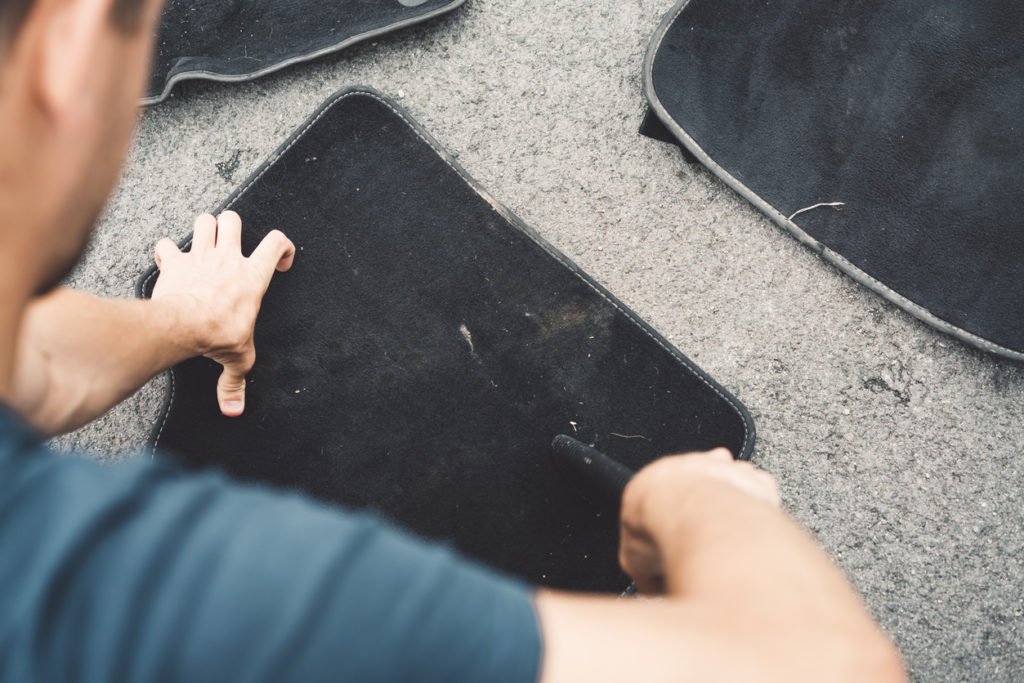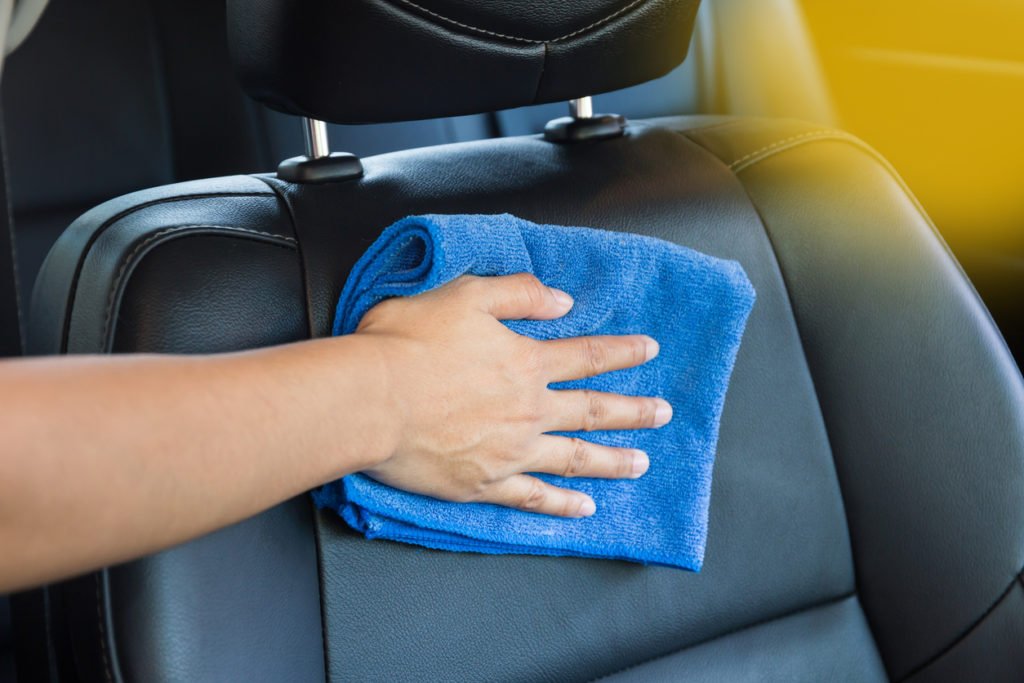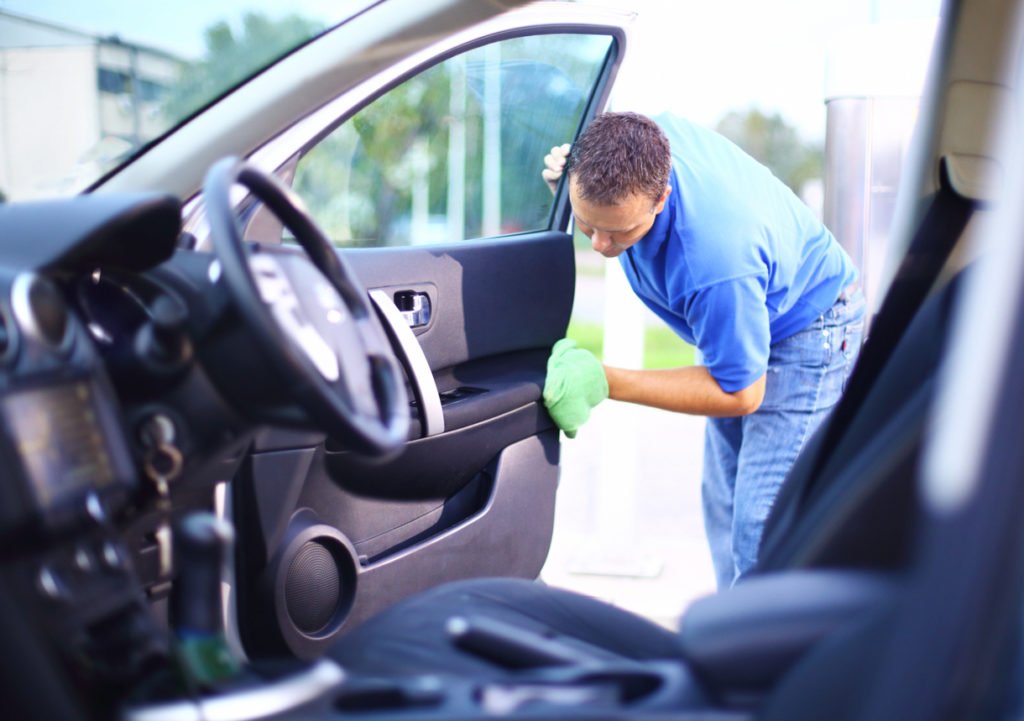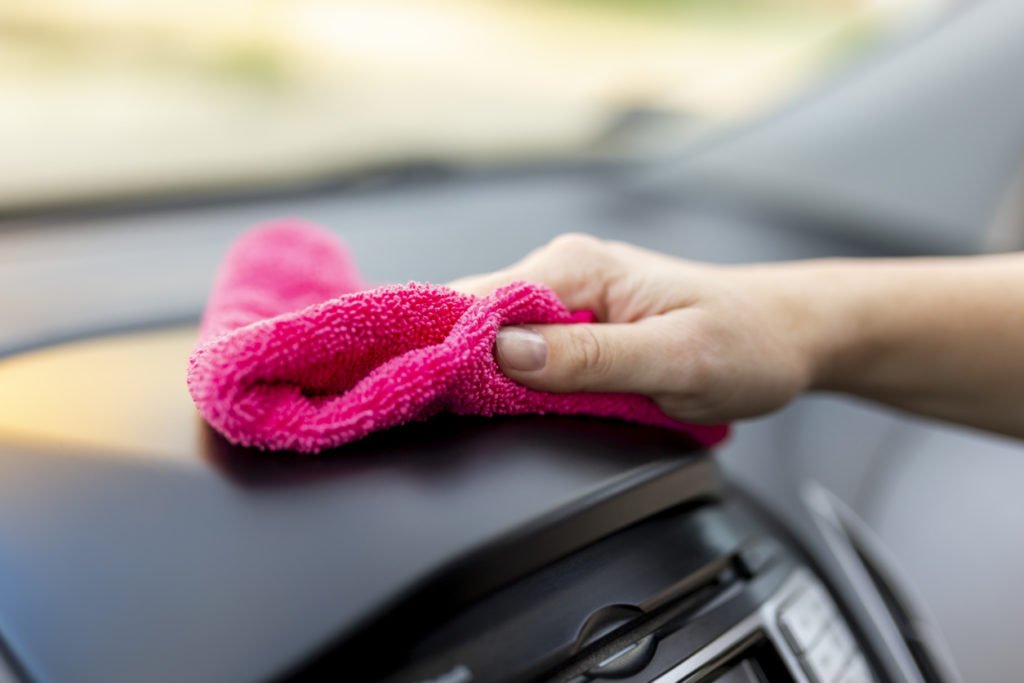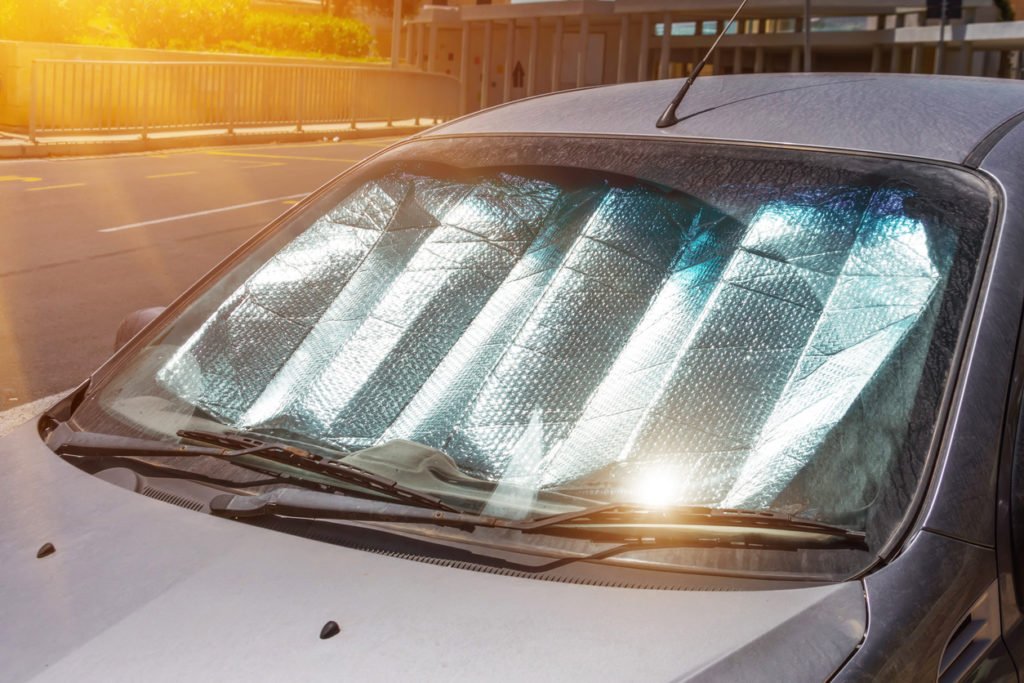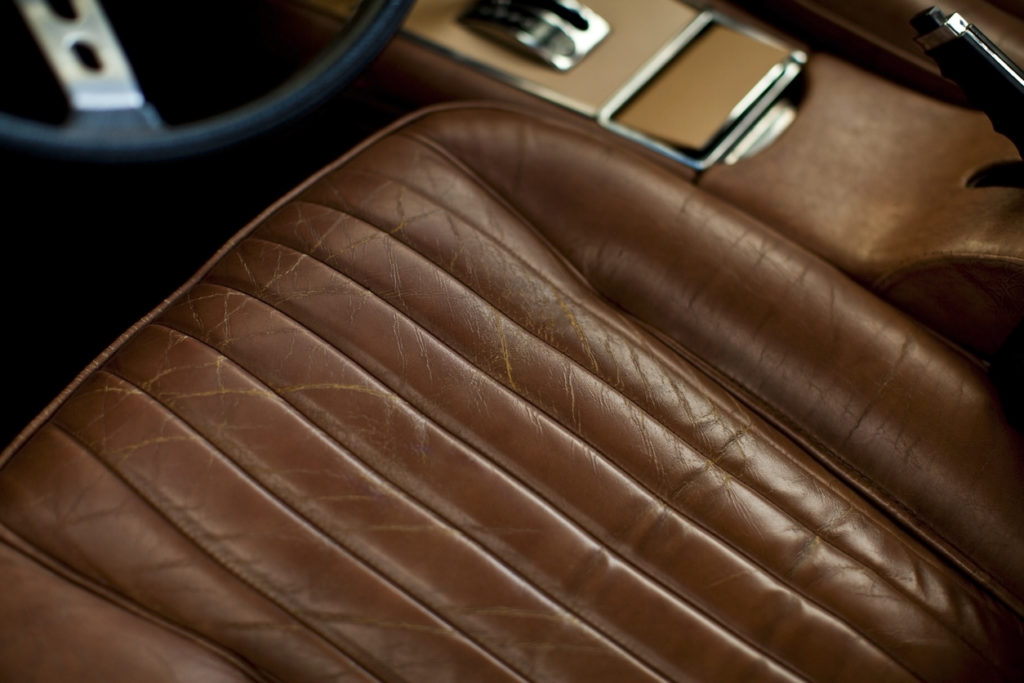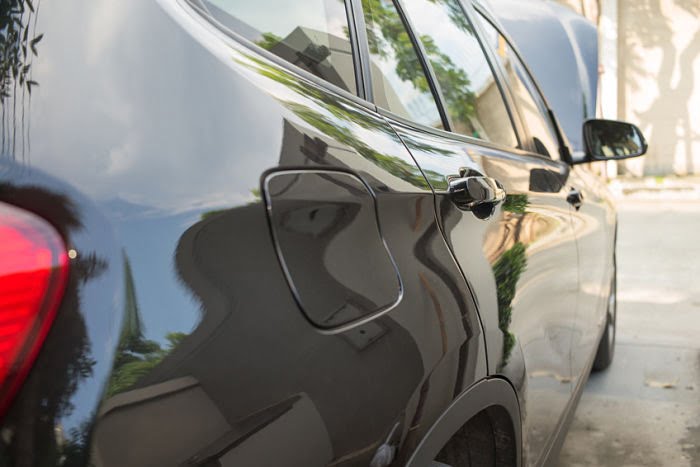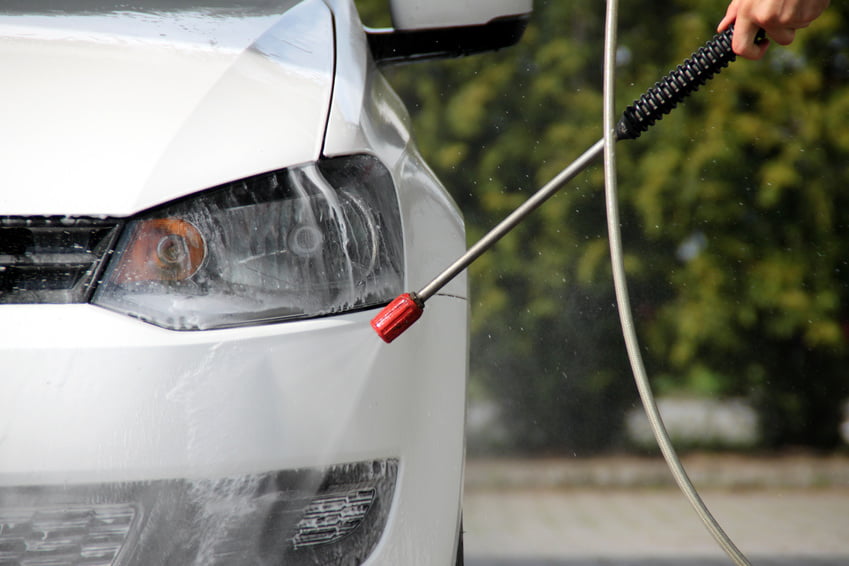From rain and snow to intense summer heat, weather can damage cars inside and out. If you want to keep yours looking its best through all four seasons, regular cleaning and maintenance are essential.
Here, we’ll be looking at ways to fix weather damage inside your car, with tips on how to protect and maintain your car’s interior against the worst of the weather.
Quick Links
- Fixing and Preventing Damp Weather Damage in a Car (Rain and Snow)
- How to Fix Materials that Have Faded in the Sun
Fixing and Preventing Damp Weather Damage in a Car (Rain and Snow)
Wet weather poses the biggest risk to your car interior. From leaky window seals to the moisture you bring in on your shoes and clothes, it can be hard to keep the inside of your car dry all the time – leading to problems like damp, mould and mildew.
To help you fix and prevent damp issues in your car, here are a few handy interior cleaning tips.
Carpets, Mats and Seats
Upholstered surfaces like carpets and seats are in the firing line when it comes to moisture damage. They’ll need regular maintenance and upkeep to stop them going mouldy and rotting in wet weather.
Follow these steps to keep your seats, mats and carpets as dry and moisture-free as possible.
- Clean upholstered surfaces regularly – get in the habit of cleaning the inside of your car whenever you do the outside. This means vacuuming the carpets and seats, before using a dedicated upholstery cleaner to remove marks and bad odours. Regular cleaning will help prevent bacteria, and keep surfaces smelling fresh. Read our guide on cleaning and maintaining car upholstery.
- Protect upholstery with water-resistant mats and covers – through the wetter months, it’s a good idea to protect the carpets, seats and boot with water-resistant rubber mats and protective covers. Rubber mats in the footwells and boot lining will protect carpets, while thin polyester seat covers will stop water transferring from your clothes to the fabric. This is definitely recommended if you have an outdoorsy job, or regularly take your dog on soggy Sunday walks.
- Keep spare clothes and shoes in your car for wet days – driving in wet clothes and shoes isn’t fun for you or your car. If you’re keen to prevent water ruining your carpets and seats, it’s worth carrying a change of shoes, as well as a jumper or jacket that you can slip on to stop moisture transferring to the seats. Alternatively, pack a few blankets so you can quickly throw them over the seats before your sodden kids clamber in the back.
Tip – if possible, when returning from a wet drive, try to get interior surfaces as dry as possible before you park your car overnight. This will help prevent damp and mildew. Kitchen roll is great for quickly absorbing moisture; you might also consider leaving the windows open if you park in a garage. A quick vacuum can also help remove moisture trapped in upholstered surfaces, though you shouldn’t try this if the car is completely soaked.
Leather
Leather is generally good at coping with moisture, but you’ll still need to maintain it to prevent permanent water damage. Areas like the stitching and seam are problem areas on leather seats, as water can pool and get into the padded cushion itself. Follow these steps to prevent water damage to leather surfaces.
- Clean and condition leather seats regularly – just as with upholstery, leather needs regular care and maintenance to keep it looking its best. As a natural material, you’ll need to treat it with the right products. A leather conditioning cream is your best bet, as this both cleans the surface while nourishing it to prevent drying. Applying a protective leather cream will help remove marks and signs of abrasion; Simoniz Conditioning Leather Cream contains natural oils, which will help make the material more water-resistant.
- Dry the seats and trim thoroughly after wet drives – after returning from a soggy drive, don’t leave your leather seats wet, as this could cause damage in the form of salt marks and a dulling of the material’s finish. Instead, give leather surfaces a quick once-over with kitchen roll, before wiping them down with a leather cleaning and protection wipe.
- Watch out for problem areas – when you sit in a leather seat in wet clothes, water will run down the surface to the base of the backrest; this can be a problem area for leather car seats. The last thing you want is moisture getting inside the seat itself, where it can cause mould and mildew. A good tip is to recline the seat back to its full downward position and give the area a thorough dry down after a wet drive. Take a wad of kitchen roll and press it firmly into the join between the seat and the backrest, to absorb as much moisture as possible.
Plastic and Dashboard Materials
Whether rain or snow has blown into your car or there’s a leak on one of the door or window seals; plastic surfaces on the door panels and dash can easily get damaged and marked by excess moisture. To prevent this, here are a few simple steps.
- Dry surfaces immediately when you notice moisture – if snow or rain has gotten into your car, be sure to dry things off straight away. The last thing you want is water running into cracks and crevices, where it can interfere with electrics. It’s a good idea to keep a roll of kitchen towel in your car for such moments; failing that, a demister pad or microfibre towel works just as well.
- Clean and protect the dashboard and trim – moisture can dull the finish of plastic interior surfaces, and leave behind salt particles which may stain materials like soft-touch matt plastics. To prevent this, use an effective dashboard cleaner to remove stains and marks from the plastic, and restore its shiny finish. Keeping a pack of disposal dashboard wipes handy can also help with on-the-go cleaning.
- Check door and window seals regularly – it’s surprisingly easy for moisture to get into your car through a faulty window or door seal, so check these areas regularly for signs of damage, abrasion or dirt which could interfere with their seal. On older cars, rubber seals can perish and rot, so you might need to have them replaced. Around the window seal, you can use a cocktail stick or other thin implement to clean out any dirt and debris which may be causing problems.
How to Fix Materials that Have Faded in the Sun
The sun’s powerful UV rays can cause damage inside your car, with some materials fading and losing their finish after long periods of exposure. While carmakers now treat windows with a UV-protective coating, you’ll still need to keep an eye on some surfaces to protect them against sun damage.
Here, we show you how to fix materials that have faded in the sun, and offer some tips on how to prevent sun damage in the first place.
Plastic and Hard Surfaces
The dashboard is the surface most exposed to the sun, so it’s here where you’re likely to see signs of damage and fading first. Plastics can fade and lose their shine under intense sunlight, so you’ll need to clean and maintain them regularly to keep them looking their best.
- Start by cleaning plastics with a good quality plastic cleaner. Simoniz Foam Action Dashboard Cleaner is great because it powerfully cleans surfaces while leaving a rich gloss or matt finish. When cleaning, use a soft microfibre cloth and wipe in a circular motion to bring up dirt and nourish the surface.
- When the surfaces are clean, it’s time to restore their matt or gloss finish. You have a few different options here, including spray treatments, disposable wipes and dashboard restorer pads. Whichever you choose, just make sure to get the right product depending on if your dashboard is matt or gloss.
Leather
Leather car seats need expert care to protect them from sunlight and heat. If left exposed and unmaintained, leather can fade, dry out and crack, so regular maintenance is essential through the summer months or if you live in a hot climate.
- Clean leather surfaces and trim regularly with a good quality leather cream. This will not only remove marks and bacteria, but will nourish and protect the material, preventing it from drying out.
- When applying leather cream, use a soft cloth and work in a circular motion, applying a little at a time. You’ll then want to leave the product to work for about five minutes, as this will give it chance to absorb fully into the leather.
- After five minutes, buff the seats with a second soft cloth, which will help restore the leather’s natural shine.
Read our guide on maintaining leather surfaces for more help protecting your car.
How to Prevent Sun Damage on Car Interiors
If you’re worried about materials in your car fading in the sun, take precautions. Here are a few things you can do to prevent sun damage and protect surfaces:
- Always park in a shady spot where possible to limit sun exposure.
- Fit sun blinds to the windows and windscreen, blocking harmful UV rays and helping to keep the car cool.
- Cover leather seats with blankets or sheets when you’re not using your car, limiting exposure and keeping them cool.
We hope this guide helps you protect your car from the worst of the weather. For more car care and maintenance advice, head to the Simoniz blog. Or, to browse our range of car care products, visit the homepage.

